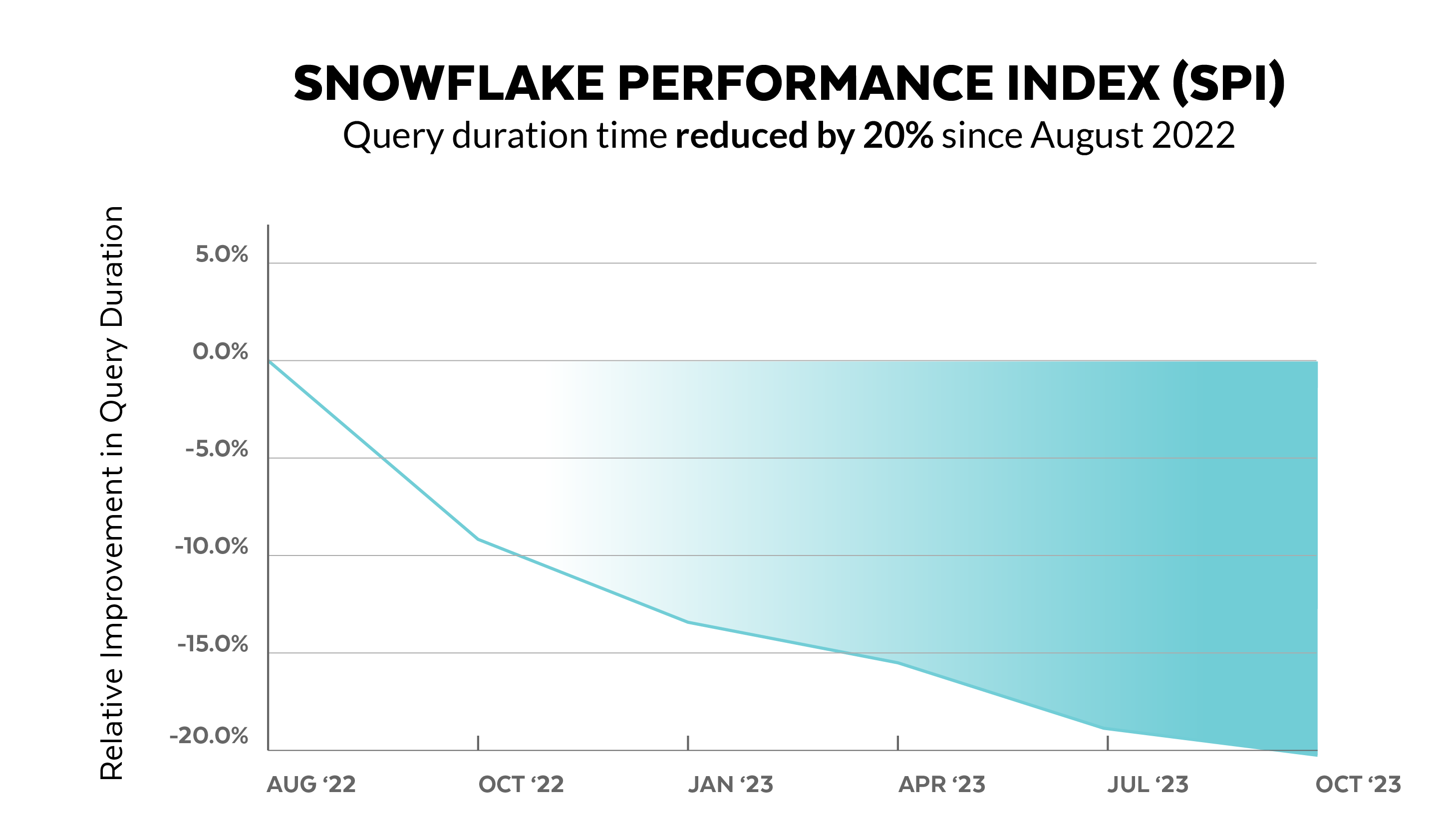Earlier this year at Snowflake Summit, we announced the public launch of the Snowflake Performance Index (SPI), an aggregate index for measuring real-world improvements in Snowflake performance experienced by customers over time. In this post, we provide our biannual update to showcase the latest improvements.
The Snowflake performance philosophy
Our product philosophy revolves around a continuous quest to enhance Snowflake performance, with a particular focus on refining the core database engine. Weekly releases are our vehicle for delivering regular performance improvements. These enhancements seamlessly integrate into your daily workflow, offering performance boosts without extra effort or cost. This approach helps to optimize your price for performance on Snowflake.
Our methodology: A recap of the SPI
The SPI is an aggregate index designed to measure the impact of these regular performance improvements in Snowflake over time. It embodies our commitment to provide transparency and accountability in continuously investing in the improvements that make Snowflake run your workloads faster.
To calculate SPI, we identify a group of customer workloads that are stable and comparable in both amount of queries and data processed over the period presented. Reduction in query duration results from a combination of factors, including hardware and software improvements and customer optimizations.
Unlike traditional synthetic benchmarks, the SPI goes beyond the surface to measure the impact of our improvements on our customers’ stable and recurring workloads. This approach allows us to track progress on specific customer workloads over time.
Numbers tell the story
Based on internal Snowflake data, query duration for customers’ stable workloads improved by 11% from October 31, 2022 to October 31, 2023.
Between the inception of the SPI in August 2022 through to October 31, 2023, query duration has improved by as much as 20%.

These numbers aren’t just statistics — they represent the tangible results of our commitment to continuously improve Snowflake’s performance for customers.
Examples of performance improvements tracked by the SPI
The SPI measures a range of price-for-performance improvements. Multiple enhancements helped make the compiler faster and more efficient. For instance, we introduced a mechanism that avoids unnecessary optimization steps based on query characteristics, improved the compilation time for queries that access Materialized Views, and improved how we evaluate SQL expressions.
Additionally, we improved the efficiency of Materialized View maintenance and made understanding the performance characteristics of recurring queries simpler. We also improved the performance of SHOW commands, introduced new Search Optimization techniques, and improved the execution time of queries that read from non-clustered tables.
These aren’t isolated improvements — they are part of a consistent delivery of enhancements that accompany nearly every weekly release. You can read more about these improvements in our performance release notes here.
A commitment to continuous improvement
The SPI is about more than just reflecting on past achievements. That’s why it isn’t a one-time metric — Snowflake is committed to continuously improving economics for our customers with a transparent and quantitative view of the impact that our platform performance improvements have on customers’ production workloads over time. The SPI serves as a compass that allows Snowflake to continuously measure and enhance the performance impact of new features, enhancements, and compute options for our customers.
Visit the SPI website to learn more.
The post Snowflake Improves Query Duration by 20% on Stable Workloads Since We Began Tracking the Snowflake Performance Index appeared first on Snowflake.






















